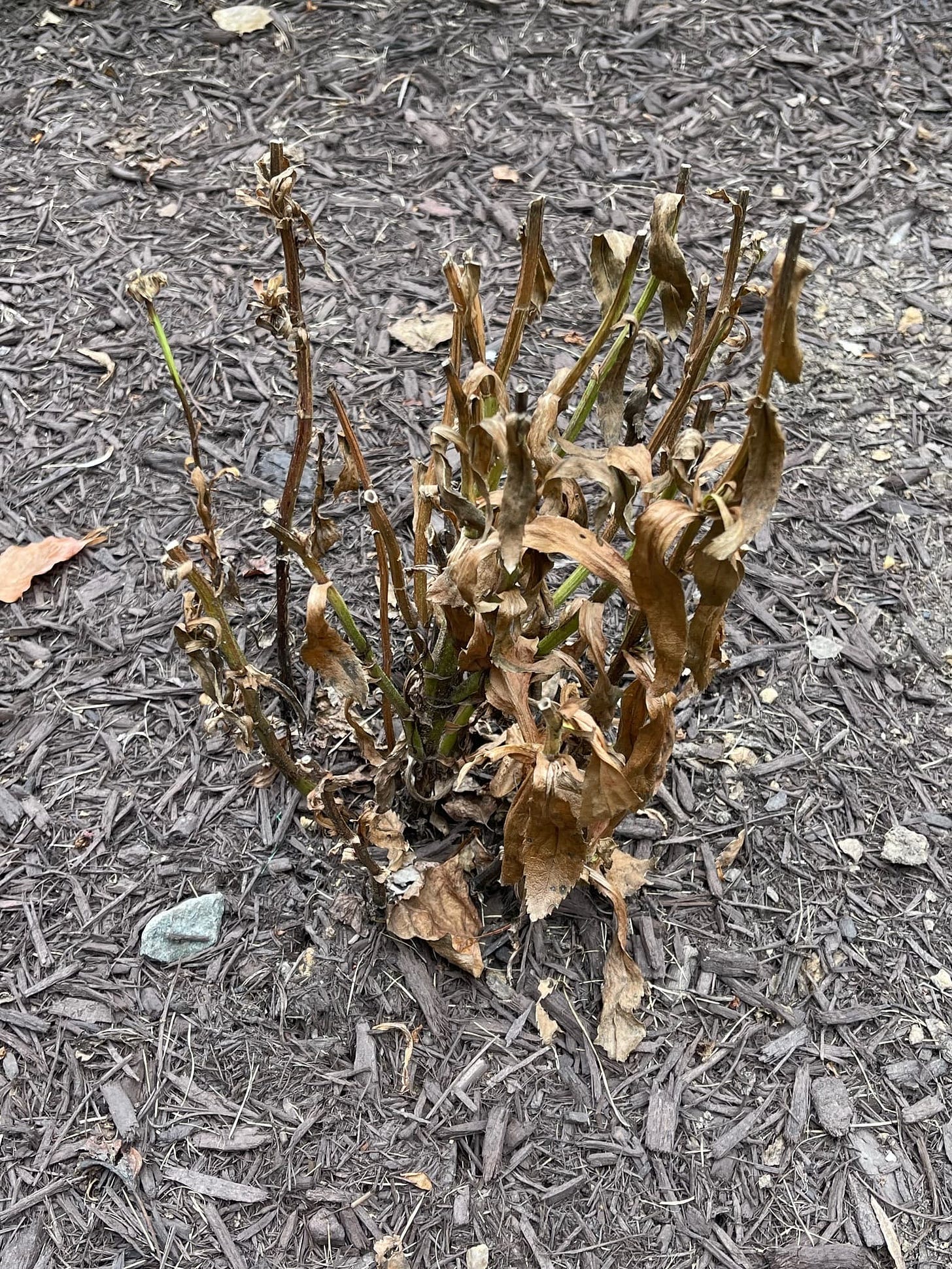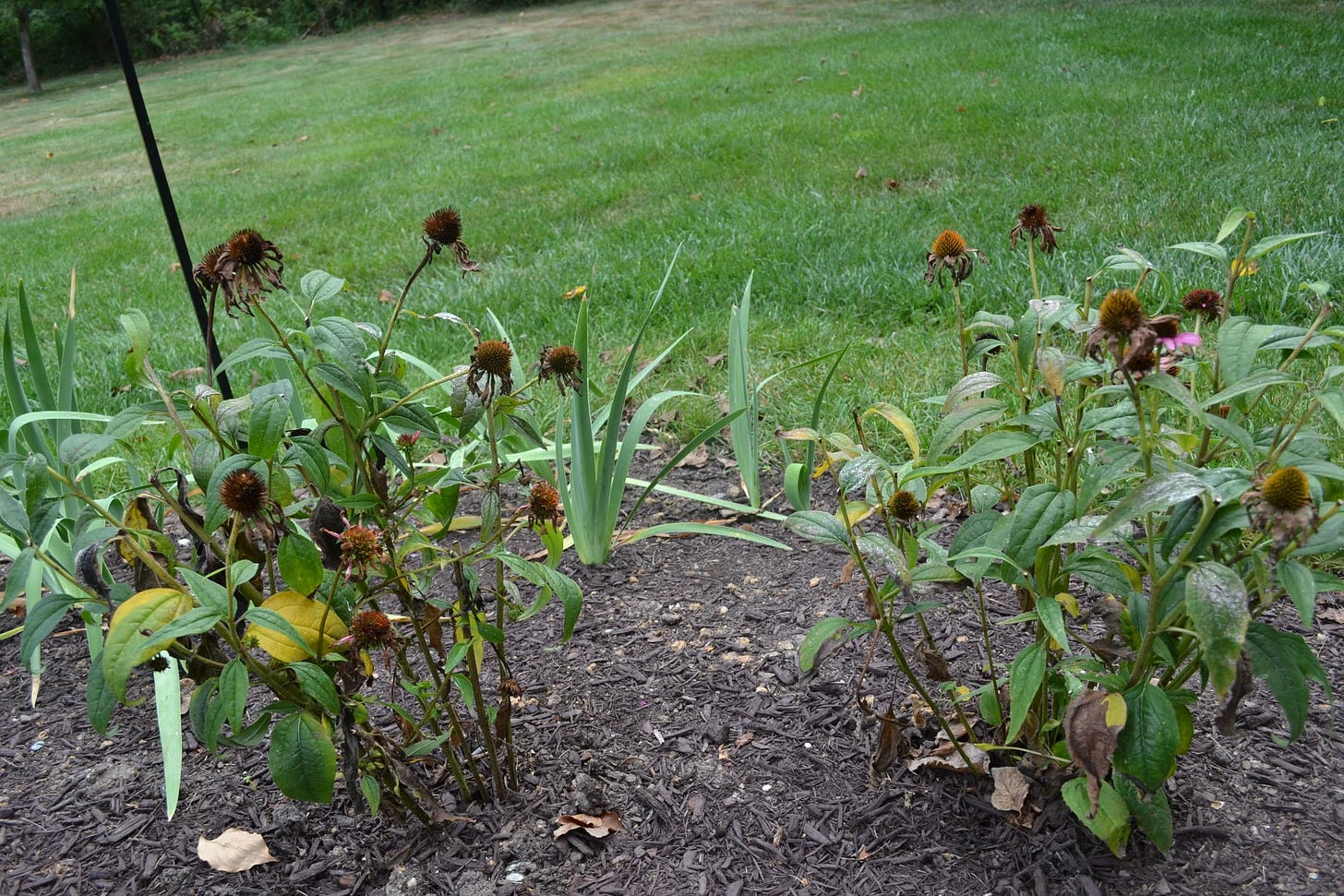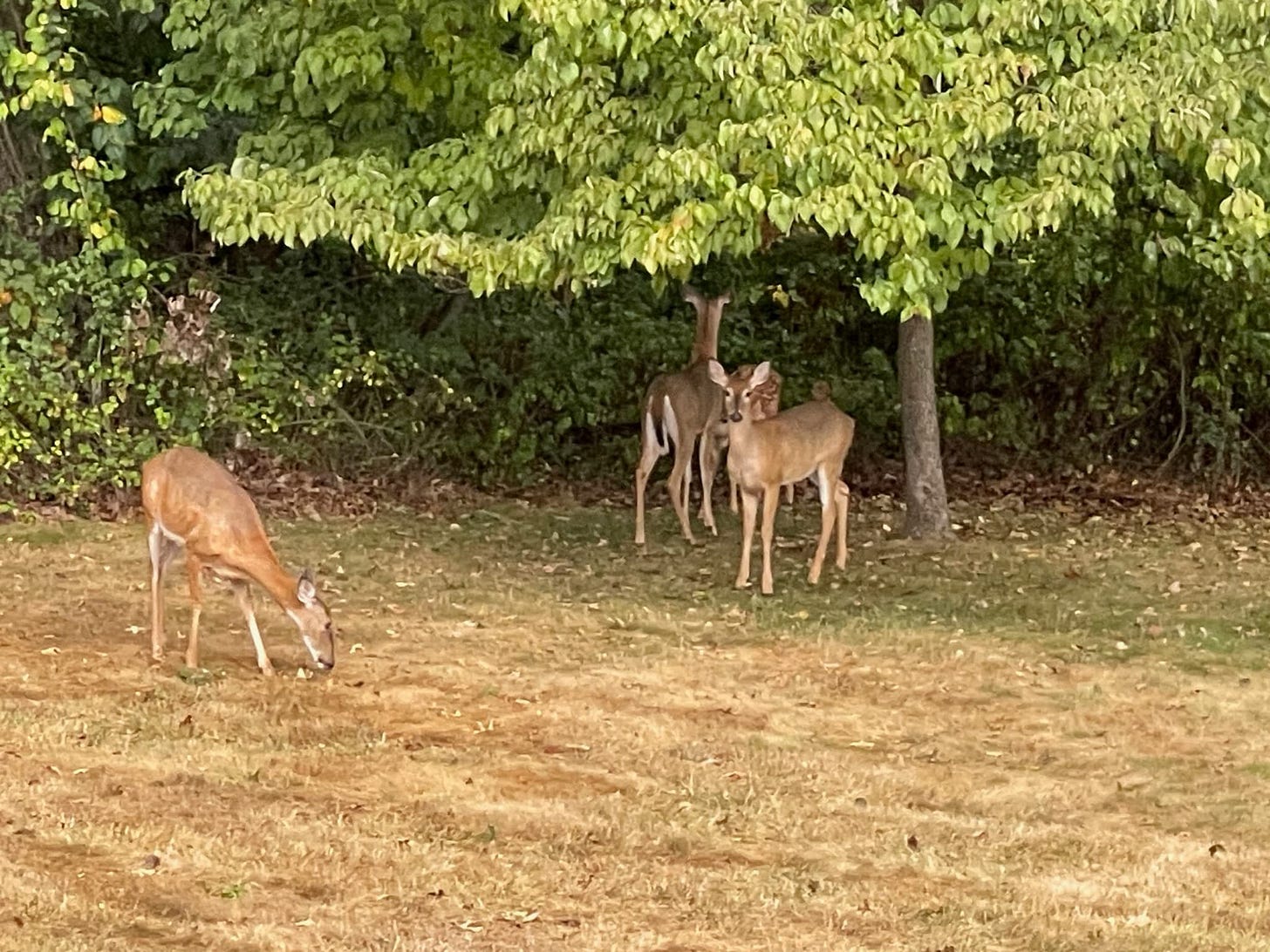There is a category of gardening articles that I call, “lessons learned.” The articles suggest a variety of helpful tips the authors learned over the past year or two that have the potential to greatly improve your gardening experience. As we head into spring, I thought I would share my own version of “lessons learned,” which is sure to rock your gardening world. Longtime readers of this blog (this is post number 20, I can hardly believe it) might question whether I’m capable of sharing tips that are useful, so I challenge you to read on and prepare for some earth-shattering revelations. Here are five lessons -- some of which are common sense and others that gardening pros would never dare publish for fear of giving away their (our) best secrets.
Lesson One
When returning dead plants for a refund, don’t feel guilty about it. Remember that it usually takes at least three years or longer for perennial plants to fully establish themselves. The mortality rate of first- and second-year plants is very high, although no one wants to talk about it. It’s not just you returning dead plants to where they were purchased. There’s a universe of beginner gardeners, and I suspect more experienced gardeners, who are in line to do the same thing. You can spot them because they don’t readily make eye contact with anyone else in line, they tend to shuffle their feet, and they have their cameras out for easy access to photos of their dead plants. If you are in the garden store or nursery as often as I am, you will rarely see dead plants in plastic bags for the staff to analyze. Customers hope that the store will accept photos as proof of death. (Plastic bags with samples of dead plants are often required by the terms of the store’s warranty.) The staff’s attention can be unintentionally embarrassing, especially when they gather around to offer their sincere expressions of sympathy for your loss. Calmly accept the store’s credit for a new plant and try not to skip out the door into the nursery where you will find your replacement plant. Consider the store credit a gift that you get to spend with the approval of the nursery. Free money. I know money is fungible, but when you’re in a nursery, dead plant refund credits tend to spend better than any other cash in your wallet.

Lesson Two
When you are installing plants, pulling weeds, or generally inspecting a garden bed, don’t step on the plants that you have carefully tried to cultivate over the past year or two. There is nothing quite as depressing as being the one who caused the fatal, or near fatal, damage to one of your prized perennials. If you find yourself in a garden bed and you happen to have a large shoe size, if you have no sense of balance, if you are not limber and have no ability to bend or stretch while working in a bed, or if you are prone to forgetting why you are awkwardly positioned in the garden bed in the first place, try your best to rise to your feet with some element of grace. Then slowly and deliberately exit the bed. If you happen to see a trampled plant, lie to yourself and blame the lawn-mowing guys for trampling the plant while they were blowing leaves from the bed into the yard. If you have trampled a plant with your general clumsiness and inexcusable lack of agility and balance, don’t blame yourself in a way that is unproductive and unhealthy. Consider it a “cost of doing business,” and try harder the next time you find yourself crawling around in the garden. If this is a serious problem, you might want to take up yoga, ballet, or another exercise to help with your flexibility and balance. The lesson is that when you are gardening, you will cause collateral damage to your plants that is unavoidable. (There is no way I’m taking up yoga or ballet, but it felt good to write it.)
Note: No photos are available of me working out, doing yoga or ballet, or doing any kind of exercise in preparation for my spring gardening chores.
Lesson Three
It takes years for a bed to be established, so don’t rearrange your plants after year one, or even year two, no matter how bad they may look to you. New beds look scrawny and untidy, with plants tending to flop all over the place and disgrace themselves with a variety of unseemly behaviors. Years one and two, you find out that the partial sun perennial you purchased isn’t getting enough sun, or too much sun, or too much water, or not enough water, or is planted in soil that has too much clay, or not enough drainage, or too much fertilizer, etc. Try to remember that the plant you see above ground is usually a small part of the whole specimen., The root ball is trying its best to survive under the surface, kind of like the biggest part of an iceberg. Be patient. (Trust me. I have two full years of experience in the garden.) I used to say, back in the years when I managed money for a living, that poor portfolio performance often resulted because analysts couldn’t imagine how good, or bad, the markets might get. It appears that the same rules apply for gardening. Be a little creative and imagine how your plants and your beds will look in a year or two. It will help you sleep better.

Lesson Four: Your plants are going to be eaten by deer. It is a virtual certainty if you live in a suburb where deer populations grow to incredible numbers. You are welcome to fight the good fight. Read everything you can about deer repellents and use sprays, soaps, urine, high tech alarms using movement-triggered lights and sound, and other hopeless techniques to keep deer out of your garden, as long as you acknowledge defeat at the beginning of the fight. The only way to keep deer out of your beds is to install ridiculously high deer fencing around your garden, an unholy defacing of anything beautiful you are trying to create. If you are at all rational, you will reject the idea of a 7-foot-tall fence and play the odds that the deer won’t get to your “deer resistant” plants too early in the season. (I’m lucky my backyard is encircled by wild blackberry bushes that the deer seem to love. They help to keep the deer out of my beds.) It is true that many perennials are deer resistant, and in my limited experience I’ve found that established plants tend to be more deer resistant than baby plants. But as the labels say on the plants that you buy, being deer resistant does not guarantee that a hungry deer won’t eat your plant. I’ve found it helpful to imagine the different ways that I will get revenge on the deer that munch my plants, even though countless naturalists will defend the deer to the bitter end. For me, I like to read different recipes for venison, even if I’ve never killed an animal in my life. (I know, I know, I still eat other animals, but that’s a different story.) I don’t even like venison, but the thought of it makes me feel better.


Lesson Five
Don’t be discouraged at the short attention span of friends and neighbors who ask for a tour of your garden. Even though every word you utter is a pearl of wisdom about the fascinating world of horticulture, it won’t take long before your guests lose interest. You will find that the most interesting stories and gardening tips will not hold your audience’s attention for long, and much like sharing photos of the family’s last vacation -- or worse, the latest visit with the grandchildren -- a garden tour is a quick way to kill a party. If it makes you feel better, you should know that your guests are vitally interested in the beautiful plants in the garden. It’s you they find boring. If you have an uncontrollable urge to discuss your garden with friends, or strangers, consider writing a blog.
Note to Reader: It’s spring and shortly there is (hopefully) going to be a lot of news coming out of the garden. Next week’s post will be about doing your homework for your 2024 garden upgrades, and then we will explore exciting topics like pulling weeds and laying down mulch. Please stick around. Feel free to share Type A Gardener with your friends and check out the archives for lots of great content. See you next week.




Oops, forgot to hit reply.
Good strategy. I use the same method for Japanese beetle traps. I buy 4 and put one on each corner of my yard so they go somewhere else.